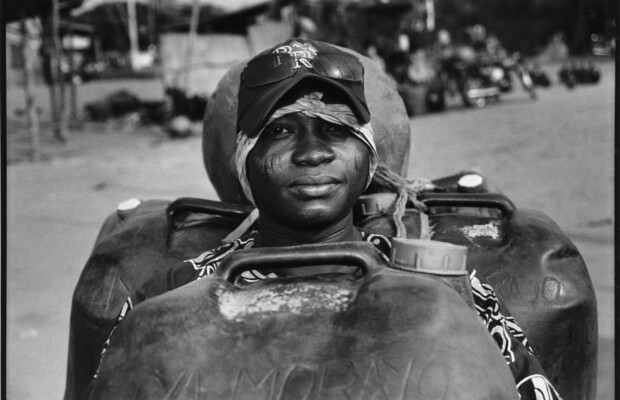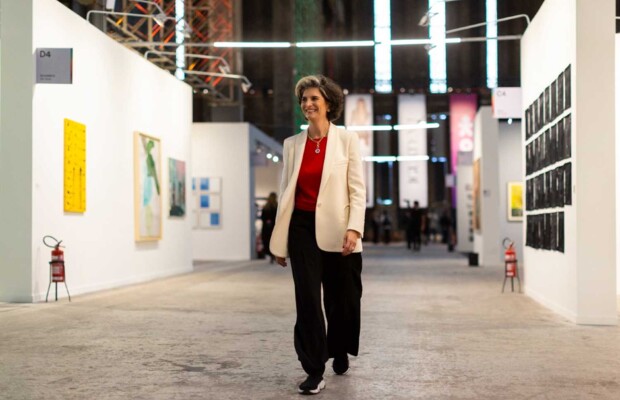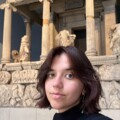6 Student Perspectives on the Value of an Arts Education
More than sole disciplines, an education in the arts holds on to innovative approaches to seeing, thinking, and connecting. Insights from six international students at The American University of Rome provide unique viewpoints on the substance of studying art, the moments that prompted their professional callings, and how their cultures and creative processes shape their educational journey.
Was there a specific moment when you realized you wanted to study the arts? If so, when?
Amelia McRae (U.S.A.): “I don't think there was a specific moment in which I decided to study art. It was always around me while growing up, considering I had come from a home where these disciplines were celebrated by my grandparents.
If art wasn't always a set of expectations, it was a hearty thrust onto me.
Instead of seeing it as a method of practice or skill, I treated it as a coping mechanism to exercise my free will on a canvas. Exploring this enabled me to express myself in a situation where I may have felt controlled or oppressed. Now that I'm older and studying art in university, I've been able to approach the subject with a much more nuanced point of view, and I can see my art go in a pointed direction rather than simply being something so private and intimate.”
Diana Ene (Romania): “When I was young, I had a lot of passions, but my main one was creative writing. I went to Oxford for a summer camp, where I studied this together with art history. Extracurricular activities made me realize what I wanted to do: creative writing, learning more about art, its history, and what value it has to our society.”
What do you like about an art education that you think you wouldn’t get from being self-taught?
Isabella Klepikoff (U.S.A.-Brazil):
“Definitely the community, connecting with people who have similar passions, and who also are interested in the creative field.
Before coming here, I didn't really have anyone close to me who was into art like I was, so I was always ‘the art kid’. Being in a situation different than that is quite nice because it can give you a really different perspective. Now I've become aware of the subjectivity of everything.”
Elena Jakovljević (Serbia): “I think there’s definitely a lot of things you get from a college education, especially in fine arts.
You get a lot of insights into art history, which is important when you are working with any type of art, including knowing the materials, which ones you should use, and how you should use them.
Hannah Cunningham (U.S.A.): “An arts education gives you the opportunity to create a lot of art on your own. It's hard to manage your time and make sure that you're creating, but with an arts education, you have all these different types of classes where you can explore mediums and professors who have distinct approaches. You get this community of people who are doing and love the same thing as you.”
How do you bring your culture into your creations?
Isabella: “As a Brazilian-American, I have moved around and I’m always influenced by my surroundings, producing from-life and realistic pieces. My Brazilian heritage comes in through conversations with family members, especially with my dad, which I translate into concepts for my art. I recently made a sculpture out of rose-colored plexiglass of a two-faced pair of sunglasses inspired by a talk with him about hope as a delusion. Rome’s landscape also plays a part. The sunglasses’ paper frames were actually inspired by the ripped-up posters on the city's walls.”


Hannah: “When I grew up, I traveled a lot. I was born in the U.S. but I lived some time in Germany.
My culture is a mix of different places and varied experiences, so I see art as deciphering the world through a more open lens.
Marina Mattei (Venezuela): As a Venezuelan, common images in my works are related to my home country and its iconography. I am mostly inspired by my personal growth and encounters during back-and-forth scenes between Venezuela and Italy, which represent the constant exploration and acknowledgment of a multicultural, dynamic identity.


Is there a special quote or advice that keeps you going in your practice?
Elena: “I'm not sure it’s a quote, but I stand by the thought that not every field requires theoretical knowledge, and I think that was my drive for the arts.
That realization that I can do something practical and still be visually pleasing and useful to a community.
Hannah: “A quote that inspires me is just “to create”. I don't know if there's a specific saying, but I think just making art is the basis of it. Sometimes it’s easy to get too stuck in your head about thinking and planning, so the best thing to do is just create. Just start making something.”
Can you share the story behind one of your recent artworks?
Marina: The prompt for a recent work came from my printmaking class. For an artist's book that would encompass all of the techniques learned throughout the semester, I meant to navigate my cultural belongings. During the process of growing up in Caracas and then moving to Rome, I developed a genuine passion for coffee tasting and making, which is the main theme of the piece. All images highlight coffee as the one thing that has accompanied me in this self-discovery journey in a positive way, eliminating the suppositions of being attached to material objects as negative.”

Isabella: “Some months ago, I made a skull painting on a large, thrifted fabric. It’s a big piece, and I was looking for some sort of freedom with my work that I hadn't been giving myself before. I was trying to find a middle ground between my personal projects, which are pretty abstract, and my academic projects, which are all mostly realistic. I like the piece because of its dramatic size and colors, and the fact that you can just roll it up or step on it if you’d like to. Although this wasn’t for a class, I used the university’s studio space to find inspiration and work on it.”


Hannah: “This semester, I took a painting class, and we painted a figure from life throughout the entire semester. Every week, the model would come and stay in the same pose. The style was inspired by Caravaggio and his work, and I found it interesting to take inspiration from an old master nowadays. Being able to focus on the same painting for so long was really wonderful and truly rewarding.”

Even during individualistic and technologically advanced times, the experiences shared by the students highlight the profound impact and connectedness of an arts education in actuality. Through their unique journeys, one can perceive how studying the arts goes beyond practical skill and encourages personal growth, cultural expression, and a deepened sense of belonging. Whether inspired by eye-opening moments, their cultures, or the community they’re surrounded by, the students demonstrate the significance of studying the arts in nurturing creativity, self-expression, constancy, and literacy. Their stories ultimately emphasize that art is not just a discipline—it’s a way of seeing, resonating, and acknowledging.
Share the post:














